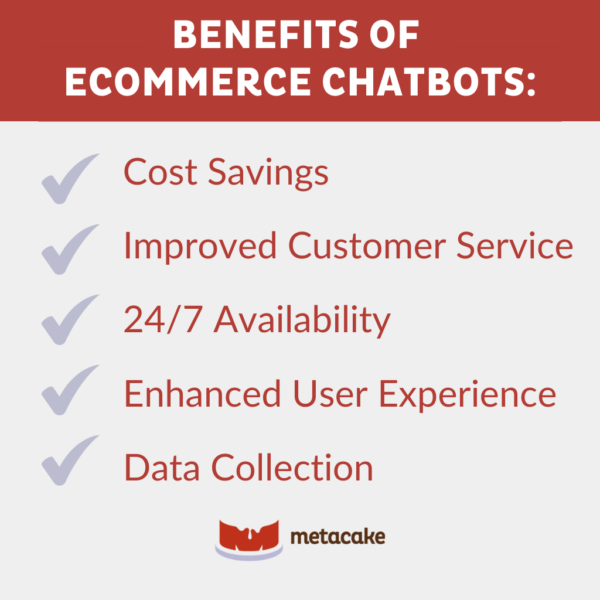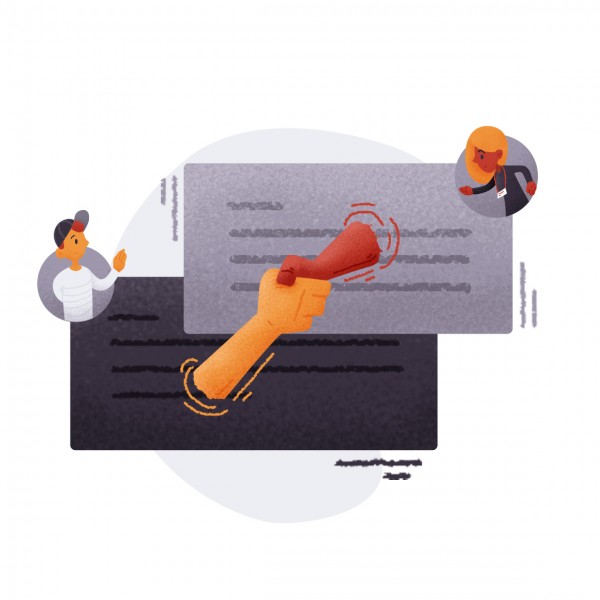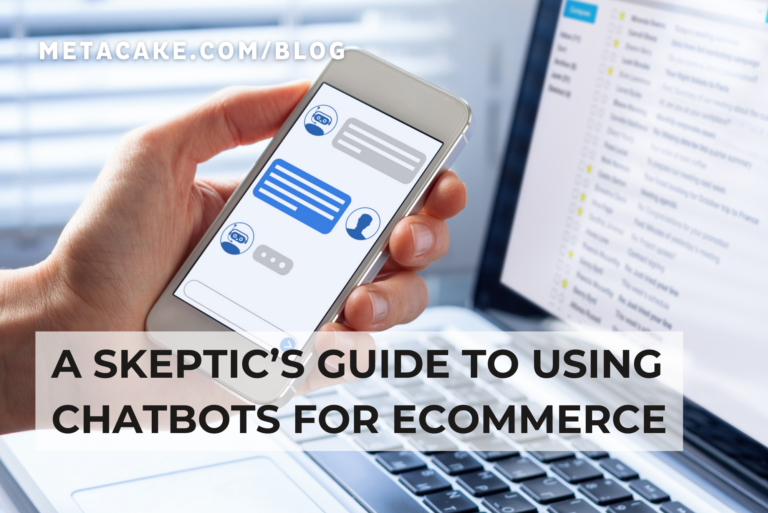Due to rising online purchases and the expansion of omnichannel retail, ecommerce chatbots have skyrocketed in popularity in recent years. But do they really work? Do they boost web performance in a meaningful way?
Well, according to Gartner, Inc., by 2027, chatbots will become the primary customer service channel for roughly a quarter of organizations.
This is sufficient motivation to investigate chatbots for ecommerce further. So, in this article, we’ll look at the general appeal of chatbots, their benefits, how to use them, and how to get started.
Chatbots for Ecommerce
First and foremost, chatbots are not a silver bullet (in fact, nothing is). However, when utilized correctly, they can deliver significant benefits.
Chatbots are programs that simulate human conversations or interactions. It’s an attempt to make digital interactions more personable.
This type of programming has been around for a long time in phone answering systems to automate the direction of your call. No doubt you’ve interacted with these phone systems that give you options and ask you to press numbers or speak your choices.
We’ve seen them for years on the web as well as in simple form, usually in the form of tutorials or as an entry into the customer service pipeline.
However, as chatbots get more sophisticated, marketers are beginning to employ them to message new and existing customers.
The Appeal of Chatbots

In concept, chatbots allow you to personalize interactions with your customers on a large scale. They enable businesses to provide customers with instant attention and responses without requiring a large sales or customer support workforce.
We’re enthusiastic about the advancements in chatbot technology that’ll allow us to provide this type of human experience online. However, it’s not so simple.
Chatbots can only carry the conversation so far before requiring an actual human to take control. To program the chatbot to communicate with your customers in an intelligent manner, you must first have a thorough understanding of their questions and demands.
And that’s no easy feat.
Don’t think that a chatbot is going to take over your customer service or replace your current customer communication and interaction completely. It won’t. However, chatbots can be highly beneficial for your business if they’re used in the right way.

Benefits of Ecommerce Chatbots
Chatbots in ecommerce are becoming increasingly important as they offer a range of benefits for both retailers and customers. Let’s look at some of their benefits:
Cost Savings: They can handle multiple customer interactions simultaneously, reducing the need for a large customer service team.
Improved Customer Service: Chatbots provide instant responses to customer inquiries, improving the overall customer experience.
24/7 Availability: They’re available around the clock, offering support whenever customers need it.
Enhanced User Experience: By automating routine tasks, chatbots can streamline the shopping process for users.
Data Collection: Chatbots can gather valuable data on customer preferences and behaviors, which can be used to personalize the shopping experience.

Using Chatbots on Your Site
Here are a few ways you could use chatbots on your site:
- At the customer service entry point, proactively ask questions to direct inquiries to the proper department or send relevant support articles.
- When a user visits your site, it’s a prime opportunity to ask a little about them. You can then analyze and categorize this data, all while getting to know your potential customer.
- Proactively send personalized offers to customers based on data.
- Reach out to customers on site to initiate communication. If they respond and continue the conversation, a real human will eventually need to take over, but this is a great way to begin the conversation.
- Request feedback through specific questions on site about the customer experience.
- Qualify leads through survey questions and answers in the form of a chat.
- Nurture leads and direct them down the funnel. Pop up a chat at certain points throughout your site to lead customers through the conversion process.
- Expand your marketing communication channels to have a presence on WhatsApp and Facebook Messenger.
- Intelligently sell products and services. Understand and meet the specific needs of your customers. Instead of pushing products or services, engage with customers to learn what they’re looking for and provide solutions tailored to their requirements — for example, allowing customers to return products through a chat interface.
Various companies have successfully implemented chatbots across different industries. Here are some notable examples:
- Starbucks uses chatbots for customer engagement and service.
- Lyft has integrated chatbots to enhance the user experience.
- Fandango employs chatbots for ticket sales and customer inquiries.
- Netflix utilizes chatbots to provide personalized recommendations.
- Adidas uses chatbots for customer service and product information.
These companies have leveraged chatbots to improve customer service, streamline operations, and increase sales. Chatbots can handle a wide range of tasks, from answering FAQs to guiding customers through the sales process. They’re available 24/7, providing instant responses and improving overall customer satisfaction.
Building a Chatbot
Building a chatbot isn’t a simple task. There are two main components. First, choose the messaging app that you’ll use to communicate with your customers. Then decide which intelligence platform will fuel your conversations.
There are a ton of these intelligence platforms, with more continually being developed.
Here are a few:
- Octane AI
- Wit.ai (owned by Meta)
- OpenAI
- TextIt
- Motion.ai (recently acquired by HubSpot)
- Chatfuel
- IBM’s Watson
No matter which intelligence platform you choose, the tricky part is to “teach” it how to interact with and respond to your customers.
Where to Start

One of the best ways to get started with chatbots is through an app called Intercom (or a similar app). We use this on our own site.
You can program the chatbot based on certain actions (for example, when a visitor follows a certain page sequence or has been on a page for a certain amount of time). The application will then initiate a discussion with your customers, asking them questions.
Following that, a real person would need to take over the live conversation, so Intercom isn’t a true chatbot. However, it’s a good method to start communicating with your customers and learning about the types of interactions that a future chatbot will need to manage.
Final Thoughts on Chatbots for Ecommerce
Before investing in the development of a complicated chatbot, we recommend starting simply and testing how chatbots could benefit your ecommerce business.
Chatbots are an exciting, growing technology, but in the end, they’re just another tool. Assess your business to determine if and where it might fit in to help it develop and scale.
If you need help doing this, reach out! Our award-winning team is always here to help.
